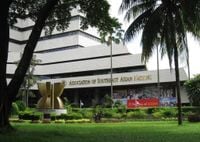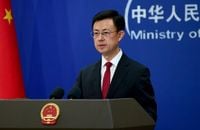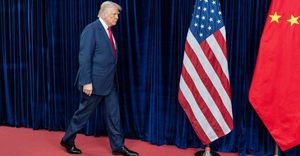In a landmark development for Asian economic relations, China and the Association of Southeast Asian Nations (ASEAN) signed the Free Trade Area 3.0 Upgrade Protocol on Tuesday, October 28, 2025, in Kuala Lumpur, Malaysia. The high-profile ceremony, attended by China’s Premier Li Qiang and Malaysia’s Prime Minister Anwar Ibrahim, marks a pivotal moment in the evolution of China-ASEAN trade cooperation—a partnership that has already transformed the region’s economic landscape over the last two decades.
The signing of the protocol, witnessed by China’s Commerce Minister Wang Wentao and Malaysia’s Minister of Investment, Trade and Industry Tengku Zafrul Abdul Aziz, represents more than just a bureaucratic update. According to China Daily, it’s a signal to the world that regional powers are doubling down on multilateralism and economic integration at a time of mounting global uncertainty and shifting trade alliances. As Premier Li Qiang put it at the summit, "China and ASEAN should take the implementation of the upgrade protocol as an opportunity to step up efforts in promoting trade and investment liberalization and facilitation and to strengthen industrial integration."
The agreement builds on a history of collaboration. The original China-ASEAN Free Trade Area (FTA) was initiated in 2002 and fully implemented as Version 1.0 in 2010. A subsequent Version 2.0 protocol, signed in 2015, came into effect in 2019. Negotiations for the current Version 3.0 upgrade began in November 2022 and were successfully concluded in May 2025. This steady progression reflects the deepening ties between China and ASEAN, who have been each other’s largest trading partners for several years running. As reported by Xinhua, bilateral trade reached a staggering $982.3 billion in 2024—a 17-fold increase since 2002.
But what makes Version 3.0 different? For starters, the new protocol expands the scope of cooperation far beyond traditional trade and investment liberalization. It targets new sectors such as the digital economy, green economy, and industrial and supply chains. Analysts say these emerging areas are critical for ensuring that both sides stay competitive in a world where technology and sustainability are increasingly intertwined with commerce. The agreement also aims to align standards and regulations, promote trade facilitation, and foster inclusive development throughout the region.
According to Xinhua, the protocol introduces higher-level facilitation measures in customs and quarantine procedures, including mutual certification and recognition of inspection results. This is expected to significantly reduce compliance costs for businesses, particularly micro, small, and medium enterprises that form the backbone of regional economies. Liu Qing, vice president of the China Institute of International Studies, emphasized that these measures will "significantly enhance the resilience and stability of regional industrial and supply chains, ultimately advancing regional economic integration to a deeper level."
On the ground, the impact of these changes is already being felt. Take Guangxi Automobile Group, for example. On Monday, October 27, 2025, the company celebrated the shipment of its 5,000th complete vehicle exported to ASEAN—an achievement that underscores how the FTA upgrades are driving international growth for Chinese businesses. As Feng Xue, director of Guangxi Automobile Group’s innovation and development department, told Xinhua, "The signing of the China-ASEAN Free Trade Area 3.0 Upgrade Protocol will bring unprecedented opportunities for Guangxi enterprises to expand their presence in ASEAN markets." The company’s export value to ASEAN markets has already exceeded 200 million yuan (about $28.23 million) this year.
Digital trade is another area seeing rapid transformation. At the Youyiguan Port in Guangxi, new digital customs systems have slashed clearance times for imported goods like durians from Thailand and Vietnam. Yu Weipeng, a business manager at Guangxi Rongsheng International Logistics, explained, "Now, with the Smart Youyiguan app, we can upload documents electronically and archive them instantly by scanning a QR code. From the moment a truck enters the port to its release, we have full real-time visibility of the process." This kind of innovation is making it possible for Chinese consumers to enjoy fresher tropical fruit and for businesses to operate more efficiently across borders.
Cross-border e-commerce is booming as well. Guangxi has established seven cross-border e-commerce pilot zones, attracting over 600 companies. From January to September 2025, the region’s cross-border e-commerce trade value exceeded 35 billion yuan, up more than 110 percent year on year—with nearly 70 percent involving ASEAN. Kao Kim Hourn, secretary general of ASEAN, highlighted the significance of this shift, noting that "the Version 3.0 upgrade will bring our economic cooperation to a height, particularly in new areas, e-commerce, digital trade and payment. This is very important between ASEAN and China, particularly in the context of current global economic dynamics."
Infrastructure projects are also central to the new phase of collaboration. Malaysia’s East Coast Rail Link, Indonesia’s Jakarta-Bandung High-Speed Railway, and the China-Laos Railway are all facilitating the movement of goods and people, reducing transportation costs and boosting regional connectivity. The Zhengzhou-Kuala Lumpur “Air Silk Road” air cargo partnership is set to streamline cross-border logistics and e-commerce even further, as reported by Sourcing Journal. Malaysian Transport Minister Anthony Loke Siew Fook urged local logistics companies to "be more proactive in connecting with partners in the ASEAN region, consolidating more ASEAN products for export to China."
Chinese automaker SAIC-GM-Wuling (SGMW) offers another example of deepening regional ties. Since establishing its first overseas production base in Indonesia in 2017, SGMW has invested over $1 billion and built transnational supply chains involving both Chinese and local Indonesian suppliers. Huang Xun, the company’s chief technology officer for R&D Quality, said, "The upgraded Version 3.0 of the China-ASEAN FTA will enhance mutual recognition of standards and conformity assessment results. This will significantly reduce costs and time spent on duplicate testing and certification—enabling companies to deliver products to the market more efficiently, thereby enhancing their competitiveness."
While the upgraded FTA is a testament to growing intra-Asian trade, it also has a geopolitical dimension. As Sourcing Journal notes, the move comes as U.S.-China trade tensions remain high, with American tariffs impacting global supply chains and prompting Asian nations to look inward for economic resilience. Premier Li Qiang, in a pointed reference to these external pressures, called on China and ASEAN to "fend off external disruptions, and defend their legitimate rights and interests through mutual reliance and coordinated actions."
Looking ahead, both sides have committed to furthering their cooperation in areas such as energy, education, tourism, and the crackdown on transnational crime. There’s also a renewed push to resolve long-standing regional disputes, with Li calling for accelerated consultations on the Code of Conduct in the South China Sea and supporting dispute resolution between Cambodia and Thailand through the “ASEAN way.”
As the protocol awaits domestic ratification by member states, the message is clear: China and ASEAN are charting a course toward a more integrated, resilient, and forward-looking economic community—one that’s determined to shape its own destiny in a rapidly changing world.






